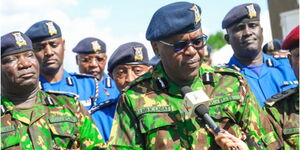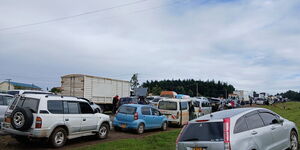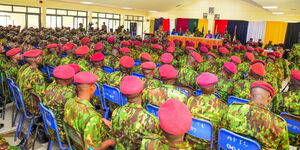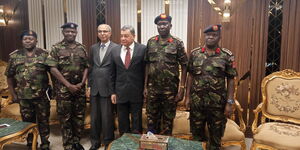Contrary to popular belief, the term ‘Jesus Nut’, a nickname for a helicopter's ‘Main Rotor Retaining Nut’, is unrelated to the Biblical Messiah.
The nut is a piece of hardware that acts as a single point of contact between the spinning rotor blade and the airframe.
According to military websites, soldiers who fought in the Vietnam war feared that the rotating blades would spin right out if the nut failed, forcing the chopper to crash.
The soldiers nicknamed the nut 'Jesus Nut' after agreeing on the analogy that they would have nothing left to do but pray in case of a tragedy.
In helicopters that still use the rotor retaining nut, the component is the only part that keeps the rotor attached to the aircraft.
Few incidents of ‘Jesus Nut’ failing have been reported widely. In Canada, in 2000, the nut was removed for repainting and was not checked before the test flight.
The helicopter crashed within ten minutes of take-off, killing two, according to the Transportation Safety Board of Canada (TSB), which investigated the case.
"With the pilot and one aircraft maintenance engineer on board, the aircraft was making visual flight rules flight to check the transponder. About five minutes later, after the pilot advised the area control centre controller that he was returning to the airport, the main rotor separated from the mast, and the blades penetrated the cockpit.
"The helicopter crashed on its back in a ploughed field 1.2 nautical miles northeast of the point of departure. A fire broke out after the impact and destroyed the aircraft. The two occupants sustained fatal injuries," the Transportation Safety Board of Canada noted.
However, there are professionals tasked with thoroughly checking all flight components before it takes off.
Aeronautical engineers do pre-flight inspections, but the captain does the final checks before the plane takes off.
The components examined are the cabin, the aircraft’s nose and propeller, the engine, the empennage (tail section), and the right and left-wing leading edges and trailing edges.
Soft main tires and the weather are also checked and analysed respectively.
In 2018, scientists innovated a 3D-printed version of the Jesus Nut, which was successfully adopted.
The 3D-printed version was strong enough to withstand the forces involved and fitted the rotor pin, which needs to turn freely within the retaining nut.












